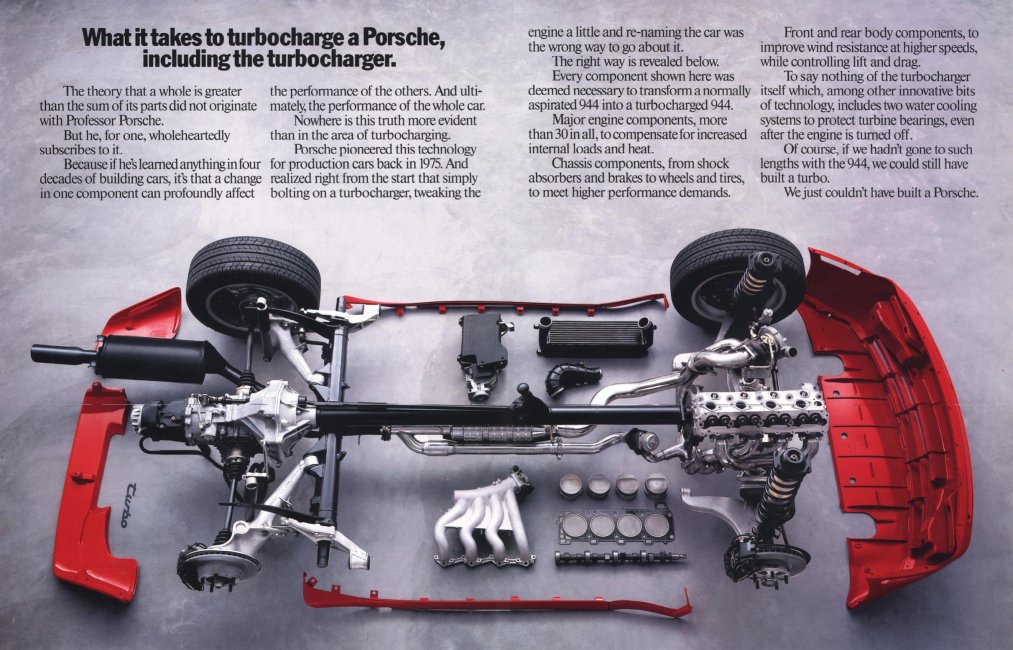I don't have much to add, but since gratuitous pics are usually welcome, here's a bit of turbo propaganda that Porsche released in the 80s. This is all the parts that are different from the naturally aspirated 944 on the turbo version.

In 1988 these made 250HP from a 2.5L 4 cyl at a very modest 11psi of boost.
And of course, I can't not mention the BMW M12 turbo Formula 1 engine, that made 1500HP from 1.5L:
https://www.youtube.com/watch?v=r2J-d5MH6s4

In 1988 these made 250HP from a 2.5L 4 cyl at a very modest 11psi of boost.
And of course, I can't not mention the BMW M12 turbo Formula 1 engine, that made 1500HP from 1.5L:
https://www.youtube.com/watch?v=r2J-d5MH6s4




